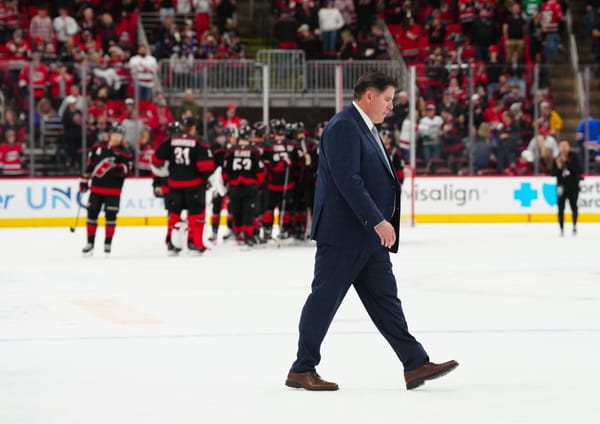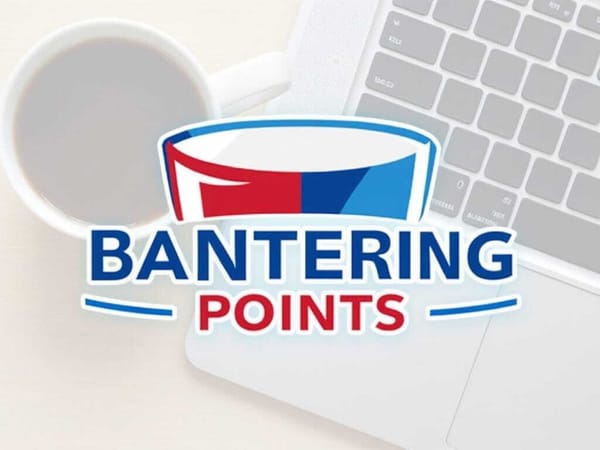What Is Fair Market Value For Mika Zibanejad's Next Contract?
Mika Zibanejad joined the New York Rangers organization on July 18, 2016, in a deal that sent Derick Brassard to the Ottawa Senators. The move was a bit of a shocker for fans because Brassard was one of the Rangers top players, and he was only two years removed from signing an extension that saw him cost a measly $5 million against the salary cap. The organization rationalized the move because it wanted to get younger and felt confident in having Derek Stepan, then age 26, and the newly added Zibanejad, age 23, as the 1-2 punch down the middle
History repeated itself a little over a week ago when the Rangers shipped out Stepan and Antti Raanta in a draft day deal for the No. 7 overall pick (Lias Andersson) and Anthony DeAngelo. Like Brassard, Stepan was only two years into a contract extension, and the organization rationalized the move because of its confidence in Zibanejad and Kevin Hayes.
With the front office now betting big on Zibanejad to be the Rangers’ first line center for the foreseeable future, what is a fair market value for the 24-year-old?
For starters, the front office was right when they took the gamble on Zibanejad the first time. He had a career year, tallying 37 points in 56 games for a points per game average of 0.66 while (29-year-old) Brassard suffered a harsh regression; finishing with 14 goals and 39 points in 81 games. A far cry from the 27 goals and 58 points he tallied a year prior.
This is not to say a 27-year-old Stepan is going to regress, but credit is being awarded for the front office having the foresight to see Brassard had peaked as a player in NYC. You’d rather trade a player a year too soon than a year too late.
There are two ways the Rangers could go in contract negotiations. The first, and riskier, of options are signing Zibanejad to a one or two-year “bridge” deal. It is risky because, with five years of NHL experience, a one-year deal would take him to a point where his next deal would buy all UFA years, and a two-year deal would take him directly to unrestricted free agency.
The logic of a bridge deal would be the Rangers wanting to get a longer look to see if Zibanejad can hold his own as a No. 1 center with no veteran backup. This would be in line with head coach Alain Vigneault’s assertion of Zibanejad being at a crossroads in his career and needing to figure it out.
AV said Zibanejad is at a "crossroads" in his career and he needs to "figure it out" because he absolutely can be a high-end C in the NHL.
— Dan Rosen (@drosennhl) May 11, 2017
The second and much smarter option would be signing Zibanejad to a long-term deal with a reasonable average annual value, “AAV”, that pays him a little more than he is worth right now but saves the Blueshirts in the long run.
In order to arrive at a number, here are three recent contracts whose term, dollars, and player production are relevant when trying to ballpark a range and rate for Zibanejad. These should serve as a guide when considering the market, and buying of free agent years.
Nazem Kadri, Toronto Maple Leafs ($4.5M AAV)
The Toronto Maple Leafs bridged Nazem Kadri twice after his entry-level deal, and luckily didn’t get burned by doing so. The two parties agreed to a six-year, $27 million extension with an AAV of $4.5 million on April 13, 2016. In 326 games prior to signing his big deal, Kadri scored 81 goals and added 116 assists for 197 points. That breaks down to 0.25 goals, 0.36 assists and 0.60 points per game. At the time of the deal Kadri was 25, and it was interesting he took a deal that didn’t compensate him for loss of multiple UFA years. It worked out for Toronto as Kadri tallied a career-best 32 goals and 61 points this season. I bet Kadri wishes he took another one-year deal because he could have made significantly more money.
Vincent Trocheck, Florida Panthers ($4.75M AAV)
The Panthers signed a 22-year-old Trocheck to a six-year pact worth $28.5 million with an AAV of $4.75 million on July 2, 2016. Prior to signing his deal, Trocheck scored 37 goals and added 46 assists for 83 points in just 146 games. That breaks down to 0.25 goals, 0.32 assists and 0.57 points per game. This was a case where the Panthers paid a little much early, but the returns thus far have been good. They also signed him to age 28, so they didn’t have to buy too many UFA years.
Brayden Schenn, St. Louis Blues ($5.125M AAV)
Brayden Schenn, then of the Philadelphia Flyers, was 24 on July 25, 2016 when he signed a deal worth $20.4 million over four years with an AAV of $5.125 million. Before the deal, Schenn tallied 84 goals and 107 assists for 191 points over 354 games played. That breaks down to 0.24 goals, 0.30 assists and 0.54 points per game. He was dealt to the St. Louis Blues on draft night for Jori Lehtera, the No. 27 overall of the 2017 draft (Morgan Frost) and a future first rounder just one year after signing him to a contract extension. It is not clear why he traded, but it doesn’t really matter in the context of this piece.
What does this mean for Zibanejad?
Of all these deals, Schenn’s is the best comparable for Zibanejad because of age, games played, and total production generated prior to an extension. Kadri’s deal doesn’t give him as much ammo, considering he got less money for more production. If anything, Kadri should serve as an example of why the Rangers could get burned by a bridge deal.
Zibanejad has appeared in 337 games played and has scored 78 goals while adding 110 assists for 188 points. His splits include 0.23 goals, 0.33 assists and 0.56 points per game. Having three fewer points in 17 fewer games and a better points per game average than Schenn is going to be something Zibanejad’s agent can use in negotiations.
Of all the players mentioned, Zibanejad’s points per game average is third, Trocheck is second, but he’s maintained it over twice the amount of games played. Additionally, Zibanejad’s H.E.R.O. chart is favorable to Schenn’s.
Schenn is listed as a winger in the chart, but he can play both positions.
Given the information presented, the best decision the Rangers can make is by signing Zibanejad to a long-term deal. It is too risky to go one or two years because both scenarios will put them in a situation where they have to pay top money for Zibanejad. Signing him now is the best chance at locking up a quality pivot at a reasonable rate. You can make the argument that Zibanejad is a second-line center right now, and the numbers show he his.
However, he is trending upwards and showed his potential this year in the regular season and playoffs. He was in a more prominent role and he produced. Next season will be even more prominent.
What’s the deal?
The Rangers can’t risk Zibanejad having an even better season with an enhanced role and ice time in 2017-18. With that said, a five-year deal that will take him to age 29 and through the 2020-21 season makes the most sense. As an aside, both the NHL and NHLPA have the option to opt out of the current CBA in September of 2019, so a deal would likely include lockout protection bonus money.
This deal would buy out three UFA years, and the Rangers would be compensating him for those “lost” years. As such a $28.75 million-dollar deal would pay him $5.75 million a year, and that would be a win for both sides. You may be saying it is $1.25 million more annually than Kadri’s deaI, but that has to do with the fact that Schenn’s deal will be the likely comparable used. The deal also assumes Zibanejad’s production continues to rise, and if it doesn’t it isn’t a deal that hamstrings the Rangers’ cap. His agent can also use the fact that Hayes is the Blueshirts’ only fallback as leverage. But honestly, $5.75 million a year isn’t terrible.
For context, the Rangers’ deal with Brassard paid him $25 million, $5 million AAV for years 26, 27, 28, 29 and 30, and he had 225 points in 403 games at the time. Those splits include 0.20 goals, 0.36 assists and 0.56 points per game compared to Zibanejad’s 0.23 goals, 0.33 assists and 0.56 points per game. At the time that represented 7.25% of the salary cap, whereas Zibanejad’s would occupy 7.66% of the current cap.
At 29, Zibanejad would have the opportunity to hit the market again, and he could be doing so at a time where the financial climate of free agency is different than it is now. From the Rangers perspective, they retain an essential piece for under $6 million a year.
Given the fact that Rick Nash’s $7.8 million comes off the books after the 2017-18 season it is possible that they could throw a few extra dollars Zibanejad’s way.
Ultimately the deal could end up costing the Rangers more, but recent contracts provide a general framework to get a deal done. One thing is for sure though; it won’t cost the Rangers the $7.8 million a year Washington is paying Evgeny Kuznetsov for 0.70 points per game (182 points in 261 games played).
BREAKING! #Caps have re-signed center @Kuzya92 to an eight-year, $62.4 million contract. #RockTheRed
— Washington Capitals (@Capitals) July 2, 2017
Full Details: https://t.co/CEPBM6cB1s pic.twitter.com/lmxmgCvROE
All contract information was found via Cap Friendly, and stats cited were found via Hockey-Reference unless otherwise noted.





